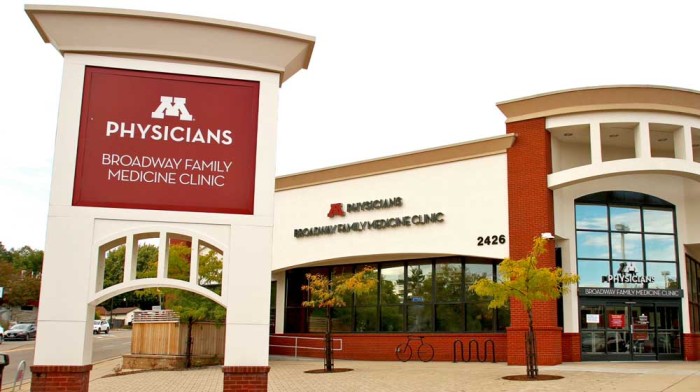
People may often find Bob Levy, MD, a family medicine and addiction medicine doctor with University of Minnesota Physicians (M Physicians), connecting with his patients at the M Physicians Broadway Family Medicine Clinic in North Minneapolis. Whether it’s the middle of the day, an evening or even a weekend, that’s where he knows he needs to be.
“When patients need help, I want to be there to help them,” Dr. Levy says. He spends most of his time helping patients recover from all kinds of illnesses, and there’s one in particular that he focuses on– opioid use disorder (OUD). So much so that he teaches future doctors how to help their patients treat OUD, and he is actively involved in helping to discover new treatments for it, too.
What is opioid use disorder (OUD)?
The Centers for Disease Control and Prevention (CDC), defines OUD as a problematic pattern of opioid use that causes significant impairment or distress, and it is often characterized by an addiction to an opioid.
It’s an illness that 10% to 12% of Americans live with, according to Dr. Levy.
OUD is also a chronic illness, which means that those who live with it will likely have it for a long time. “But like many other chronic illnesses,” Dr. Levy says, “It’s very treatable.”
When Dr. Levy thinks of OUD, it reminds him of another chronic illness that roughly the same number of Americans live with: diabetes. “Both conditions are chronic, and both have a range of treatments that are proven to really help,” he explains.
Treating OUD
“Patients of all ages and walks of life who want to treat their OUD come to our clinic,” Dr. Levy says. “And there are several ways we can help with that. It’s what we do, to help each patient find the right kind of treatment for them.”
Most of the time, Dr. Levy says, patients who are considering seeking treatment for OUD will likely benefit from it. “I usually say, if you think you can benefit from help, you probably can. All it takes is a phone call to our clinic, and we will handle the rest from there.”
Dr. Levy’s team specializes in treating so many different illnesses, so patients may often come to the clinic for their other health care needs during the same visit, too.
“That’s what’s great about primary care and addiction medicine,” Dr. Levy says. “We can help so many patients with different conditions– helping them to lead healthier lives.”
How treatments work
When it comes to OUD, there are two main kinds of medicines a patient might take. The good news is both work. It just depends on which works best for each patient’s lifestyle.
One of the treatments Dr. Levy most often prescribes for his patients is called burprenorphine (pronounced “bew-pren-or-feen”). “It can be really beneficial for patients,” Dr. Levy explains. “In fact, patients with OUD who take buprenorphine are 30 times less likely to die than those who don’t.”
Buprenorphine can be taken as a pill, and it’s a kind of medicine that is similar to other medicines a doctor might prescribe for someone who needs chronic pain relief. The biggest difference, though, is that buprenorphine has a limit for any opioid’s effects on the body. “It limits how the body reacts to an opioid,” Dr. Levy explains, so it’s a safe option that prevents both overdose and the sensations patients may feel if they use other opioids too.
“A patient will usually need to take this medicine for a long time, but there are ways we can help them work their way off it,” he notes.
The other kind of medicine Dr. Levy often prescribes is called naltrexone, and it works by blocking the effects of an opioid and helping prevent the desire to use one. It’s very safe, he says, and it also works well for patients who may have alcohol use disorder, too.
The bottom line for OUD
Dr. Levy says that, as with many other chronic illnesses, OUD can have life-long impacts for a patient’s health and wellbeing, but that doesn’t have to be it. OUD is treatable with the right plan and care partnership.
“People live happy and healthy lives with OUD treatment,” Dr. Levy says. “I encourage any patient who is thinking about seeking help to reach out, we are here and happy to help you. It’s what we do.”